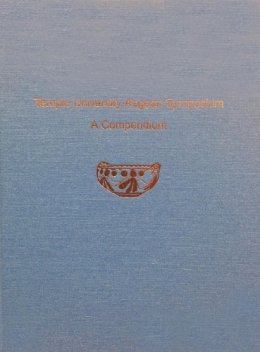
Stock image for illustration purposes only - book cover, edition or condition may vary.
Temple University Aegean Symposium: A Compendium
Philip P. . Ed(S): Betancourt
€ 129.34
FREE Delivery in Ireland
Description for Temple University Aegean Symposium: A Compendium
Editor(s): Betancourt, Philip P. Num Pages: 620 pages, black and white illustrations. BIC Classification: 1QDAG; 3B; HDDA. Category: (P) Professional & Vocational. .
The Temple University Aegean Symposium was an annual event from 1976 until 1985 sponsored by the Department of Art History at Temple University in Philadelphia, PA. Each year, the symposium focused on a specific theme in Aegean Bronze Age art and archaeology. This book is a collection of the 10 volumes of articles that were published. Aside from incorporating errata, the articles are unchanged from the original publications. A new Preface and page numbering system are included in this compendium.
The Temple University Aegean Symposium was an annual event from 1976 until 1985 sponsored by the Department of Art History at Temple University in Philadelphia, PA. Each year, the symposium focused on a specific theme in Aegean Bronze Age art and archaeology. This book is a collection of the 10 volumes of articles that were published. Aside from incorporating errata, the articles are unchanged from the original publications. A new Preface and page numbering system are included in this compendium.
Product Details
Publication date
2015
Publisher
Institute for Aegean Prehistory United States
Number of pages
620
Condition
New
Number of Pages
636
Format
Hardback
Place of Publication
Philadelphia, United States
ISBN
9781931534826
SKU
V9781931534826
Shipping Time
Usually ships in 15 to 20 working days
Ref
99-2
About Philip P. . Ed(S): Betancourt
Philip P. Betancourt is Laura H. Carnell Professor of Archaeology and Art History at Temple University.
Reviews for Temple University Aegean Symposium: A Compendium
Perhaps the best use for the volume (which, it has to be said, is very reasonably priced) would be as a training ground for beginners in postgraduate research in Aegean prehistory, to see if they can identify arguments based on once prevalent but questionable assumptions, or conclusions about material that have been called into question, if not made obsolete, by ... Read more
